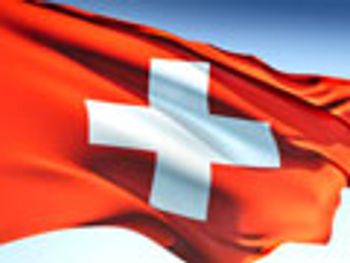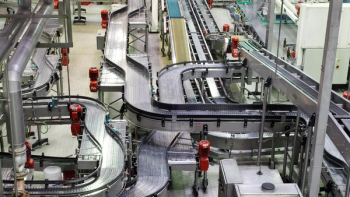
Bridging R&D and IP: Anjum Swaroop, Dr. Reddy's
Anjum Swaroop, Vice President and Head of IP at Dr. Reddy's, talks to Pharm Exec about her journey with the company and about what the future holds for this major US generics player.
After joining Dr. Reddy’s Laboratories in Hyderabad, India as a scientist in 1999, Anjum Swaroop developed a strong interest in patent litigation and intellectual property (IP) and was tasked with setting up the company’s first IP department. In 2002, she was assigned to Dr. Reddy’s US headquarters to oversee the company’s IP activities there. Although she arrived with just a beginner’s knowledge of the US patent system, that very quickly changed. Now the company’s Vice President and head of IP, based in New Jersey, she talks to Pharm Exec about her journey with the company and about what the future holds for this multinational pharmaceutical company and major US generics player.
Pharm Exec: What kind of changes have you seen during your career at Dr. Reddy’s?
Anjum Swaroop: I have been at this company for over 20 years and I have seen an incredible amount of changes. I’ve seen Dr. Reddy’s mid-size domestic operation grow exponentially into a major global player. That growth entailed widespread expansion of all of our businesses including active pharmaceutical ingredients (API), oral finished dosage forms, injectables, drug-device combinations, biopharmaceuticals (biologics), and Research and Development (R&D) innovation.
My own role has changed drastically. I joined as a bench chemist in November 1999 in the API facility in Hyderabad. I began my career synthesizing chemical compounds. I had experience in this area from working for my Ph.D. in Organic Chemistry. I believe I may have been the first female Ph.D. at Dr. Reddy’s API manufacturing facility. In light of my prior expertise, I was given the most complex molecules to develop! Soon thereafter I became interested in patents. India at that time had recently signed the Patent Cooperation Treaty (PCT) and the Paris Convention for the Protection of Industrial Property. So, after working as a scientist for two years, I formed Dr. Reddy’s patent department in India. In 2002, I was asked by Dr. Reddy’s CEO to move to the US and be responsible for evaluating and navigating the US patent landscape. I then came to the US to oversee this work, but I had much to learn, so I decided to formally study law and enrolled in Rutgers University School of Law.
My work now involves patent analysis and anything that is concerned with patent litigation, anywhere in the world. I oversee our entire department and major parts of that role include case strategy, budget management and litigation management. Additionally, now that Dr. Reddy’s is moving into biologics in the US and other regulated markets, I am now also focused on those products in terms of strategy, development, and future litigation. I also work on Dr. Reddy’s portfolio, ensuring that we are choosing the right products based on many considerations-IP considerations being one-and making sure we have an increasingly strong pipeline for the future.
How difficult was it moving from bench science to the area of litigation?
I wouldn’t say it was difficult because working with patents satisfies my scientific curiosity and therefore came naturally to me. Most patent attorneys are scientifically-trained, of course. So although I am an attorney, my work deals with hardcore science, whether it’s chemical syntheses, formulations, polymorphism, biopharmaceutics or other technical issues so I have the best of both worlds. I have my scientific side continually satisfied and I also enjoy the legal side. Science often has clearly defined rules, but while attending law school I appreciated a different lawyerly approach. Solutions to problems were not always black and white, but rather could be many shades of gray! It often depended on which side you were advocating for and which positions were best supported by the law. I found that very challenging, but I enjoyed it immensely.
What are your challenges that you see in the US in terms of IP strategy and IP law?
Patent owners will pour immense resources into protecting their products through litigation and by filing for numerous additional patents. From the perspective of a generic pharmaceutical company in the US, we often have the burden of proof in patent litigation to convince the court that a patent is invalid. We also are required to defend against patents that are not infringed but nevertheless will be asserted against us in litigation. In order to successfully navigate through these hurdles we have to work very hard on the legal side in the United States, starting well before any litigation is even filed. We have been successful a great many times during my career in the numerous litigations we have had. It can be an uphill battle, but it’s one that we fight well.
How closely are you involved with the development decisions coming out of the Indian HQ?
I’m very involved and connected with the R&D and IP teams. For example, if we are developing a new product, and that product has a patent for its API, my job is to help develop the product in a way that does not infringe the patent. This involves continually working with the IP and R&D teams in India and as a group we then decide how to invent around and not infringe that patent. This of course provides us with a robust portfolio, a deep understanding of the patent landscape and the best possible legal positions in the event there is any subsequent patent litigation. I am therefore deeply immersed in the everyday operations that concern IP and product development, and this involvement is extremely beneficial to me in my role in navigating IP hurdles and managing the IP litigation. Similarly, I am also participating in this role with our biologics teams, parts of which are based both inside and outside of India.
What does the future hold for Dr. Reddy’s in the US?
I am very enthusiastic and optimistic about Dr. Reddy’s future. The increasing pressures on all companies making generic drugs has provided companies with extraordinary capabilities like Dr. Reddy’s with an opportunity to leverage their expertise into new and exciting areas. With more non-US-based companies coming into the simple oral solids generics space, it has become crowded, so we have answered by creating new opportunities for ourselves. Dr. Reddy’s task is to differentiate the company from the increased competition by leveraging our very strong capabilities in a large number of therapeutic areas and our state-of-the art R&D center which includes over 70 laboratories and 800 research scientists. Right now, our portfolio consists not only of oral solid dosages, but includes and continues to grow into injectables, patent-protected branded products, topicals, immune-oncology, drug-device combinations, and other deliver technologies. We are expanding by making a huge leap into complex generics. We are also uniquely positioned to succeed to make very high quality and affordable biologics available. With this strong pipeline and our dedicated teams I am confident that we are making the winning moves to grow our success. Our internal strengths will continue to lead us on our path to play an increasingly crucial role in healthcare. I am very excited about what the future holds for Dr. Reddy’s.
Newsletter
Lead with insight with the Pharmaceutical Executive newsletter, featuring strategic analysis, leadership trends, and market intelligence for biopharma decision-makers.




